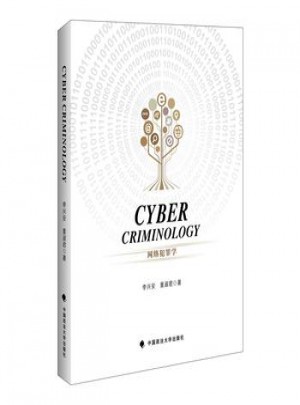
網(wǎng)絡犯罪學
- 所屬分類:圖書 >法律>網(wǎng)絡法律法規(guī)
- 作者:[李興安]、[董淑君]
- 產(chǎn)品參數(shù):
- 叢書名:--
- 國際刊號:9787562072560
- 出版社:中國政法大學出版社
- 出版時間:2017-10
- 印刷時間:2017-10-01
- 版次:1
- 開本:16開
- 頁數(shù):200
- 紙張:膠版紙
- 包裝:平裝-膠訂
- 套裝:否

本書探討了信息技術(shù)發(fā)展對于傳統(tǒng)社會控制機制樹立的挑戰(zhàn),提出一個廣義的定義方法,認定了網(wǎng)絡犯罪的特點及其對于偵查概率和威懾效果的負面影響。鑒于現(xiàn)行有關(guān)網(wǎng)絡犯罪的法律框架在打擊網(wǎng)絡犯罪中其效甚微,本書主張,為使信息社會得到保護,法律威懾取得實效,國家之間、傳統(tǒng)空間與網(wǎng)絡空間之間的法律與管轄的鴻溝必須去除,才能追究犯罪主體的刑事責任。
本店所有圖書均為正版 請放心購買,有任何問題請聯(lián)系在線客戶或致電,謝謝
李興安,旅歐華人學者。芬蘭圖爾庫大學法學博士,坦佩雷大學計算機科學博士。現(xiàn)任芬蘭國際信息社會研究所(三櫻智庫)首席科學家,愛沙尼亞塔林大學副教授,北京航空航天大學工業(yè)與信息化法治研究院特邀高級研究員,重點實驗室學術(shù)委員會委員。著有《網(wǎng)絡犯罪導論》、《網(wǎng)絡犯罪與威懾:構(gòu)建網(wǎng)絡化信息社會的法律網(wǎng)絡》、《數(shù)據(jù)挖掘方法在犯罪研究中的應用》、《二十一世紀的網(wǎng)絡犯罪與網(wǎng)絡安全》、《網(wǎng)絡安全詞典》等。在國際學術(shù)刊物四十余篇。
董淑君,刑法學博士,中國政法大學副教授,碩士研究生導師,曾兼任北京市密云區(qū)人民檢察院副檢察長,曾任北京市華聯(lián)律師事務所執(zhí)業(yè)律師。主要代表論著有:《刑法的要義》、《刑法概論》、《刑事錯判研究》等。
前
PREFACE
LIST OF FIGURES
LIST OF TABLES
TABLE OF CASES
ABBREVIATIONS
CHAPTER 1INTRODUCTION
11Social context of cybersecurity and cybercrime
12Structure of this book
CHAPTER 2DECIPHERING THE PHENOMENONOF CYBERCRIME
21Introduction
22Development of definition of computer crime
23Analysis of the previous shortcomings in defining
cybercrime
24How to define cybercrime?
25Reading of the "cyber" label of criminal phenomenon
26The necessity of a broad definition of cybercrime
27A definition based on roles of information systems
CHAPTER 3CLASSIFICATION OF CYBERCRIME
31What roles can information systems play in cybercrime?
32Comparison with other conceptions
33Conclusion
CHAPTER 4SUBJECTS AND SUBJECTIVEASPECTS OF CYBERCRIME
41Introduction
42Whats special with cybercriminals?
43The perceived context of the perpetrators
44Forms of organization
45Age and cybercrime
46Psychological features of cybercrime
47What motivates a cybercrime?
48Conclusion
CHAPTER 5RECOGNIZING CRITICAL FACTORSIN COMBATING CYBERCRIME
51Introduction
52Victimization in cybercrime
53Time in cybercrime
54Space in cybercrime
55The technological nature
56The complexity of cybercrime
57The costs of cybercrime
58The anonymity of the perpetrators
59Hidden victims
510The concealment of cybercrime traces
511The transterritoriality of cybercrime coverage
512The rampancy of cybercriminal phenomena
513Rentseeking from the exaggeration of insecurity
514Conclusions
CHAPTER 6THE HISTORICAL DEVELOPMENT OFCYBERCRIME AND DETERRENCE
61Basic observations on the development of criminalphenomena
62Computer hackers discovery of a lawless new frontier
63The rise of the law against the increasing number ofcybercrimes
64A legal system wrestling with networked adversaries
65The equilibrium between cybercrime and deterrence
66Conclusion
CHAPTER 7LIABILITY FOR CYBERCRIME
71Introduction
72Criminal liability, civil liability and administrative liability
73Individual liability and corporate liability
74Liability based on law and liability based on contract
75Intentional liability, negligent liability and reckless liability
76Direct liability and indirect liability
77Trespassers liability, third parties liability, and victimsliability
78Domestic liability, transnational liability, and internationalliability
79Offensive liability and defensive liability
710Punitive liability, exemplary liability and compensatoryliability
711Conclusion
CHAPTER 8CYBERJURISDICTION
81Introduction
82The legal basis for cybercriminal jurisdiction
83"Separate" or "international" jurisdiction?
84The specific space — the determination of the location ofconduct
85The specific player — the determination of the location of theperson
86Liabilitybased cybercriminal jurisdiction
87Critical factors in cybercriminal jurisdiction
88Conclusion
CHAPTER 9INTERNATIONAL ACTIONSAGAINST CRIMINALITY
91Introduction
92From domestic legislation to international harmonization
93Professional efforts of the International Criminal PoliceOrganization (Interpol
94Regional efforts
95Multinational efforts
96Global efforts by the United Nations (UN
97The focuses of international harmonization
98From conversation to the European Convention
99Limited progress in international harmonization
910Conclusion
CHAPTER 10CONCLUSIONS
101Dilemmas of cybercrime control
102The primary factors benefiting cybercrime
103The primary factors preventing cybercrime
REFERENCES